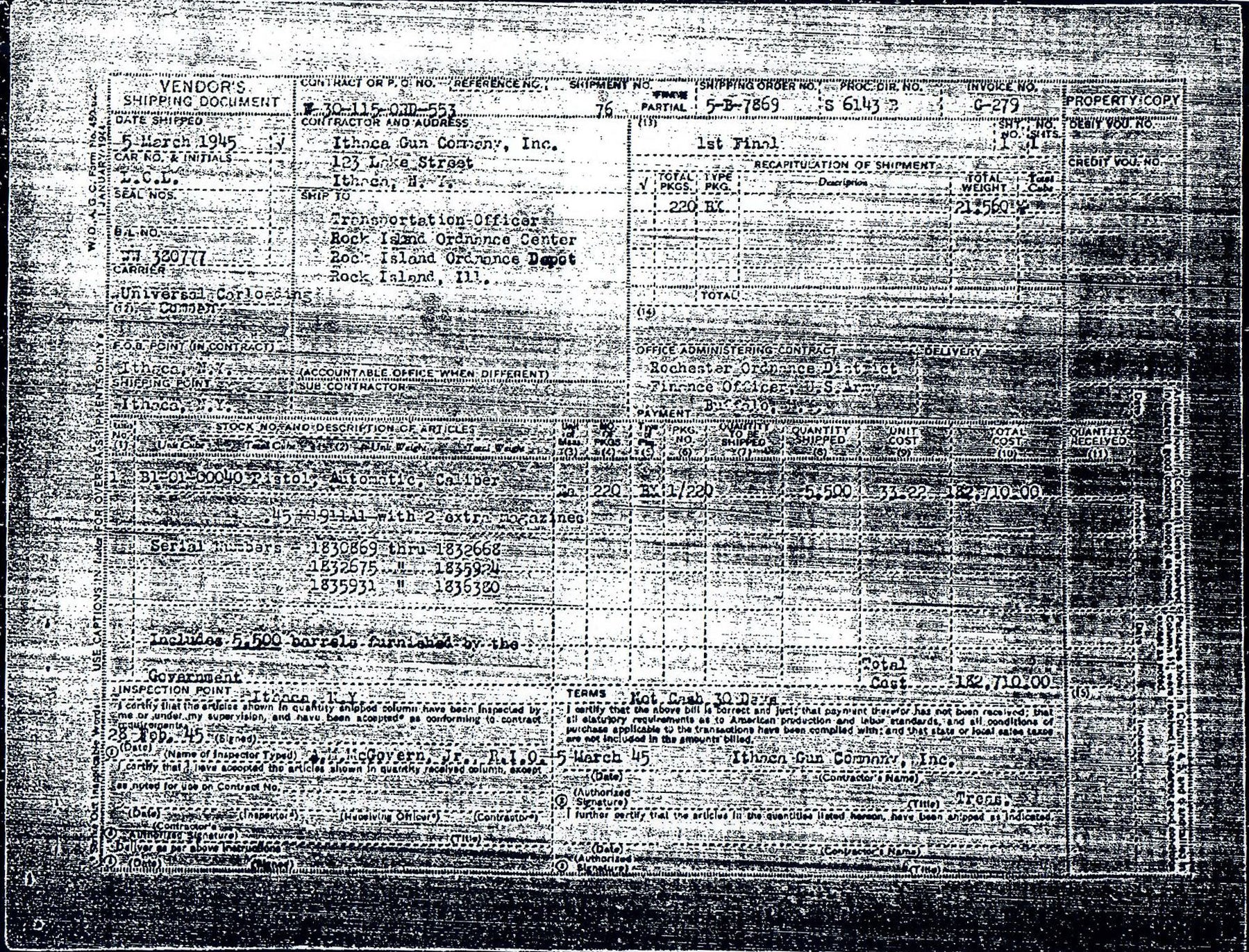

Kahr’s founder and CEO Justin Moon said that his good fortune to steer a reinvigorated Auto-Ordnance into the 21st Century was, “a chance to become involved in preserving an essential part of American heritage.” Moon, who has a passion for American history, explained that “Our nation was founded by brave patriots who were willing to take risks, face dangers, and use their inventiveness to overcome all obstacles. In 1999, the Kahr Firearms Group acquired the name and, moving production to its current Worcester, Mass facility, has been going strong with a variety of Thompson-branded M1927 style semi-auto carbines and pistols, M1 Carbines, as well as a rebooted M1911A1 line. By 1991, Auto-Ordnance was located in West Hurley, New York, and was producing an array of M1911-style pistols to mixed reviews.

In the intervening years, Gun Parts Corp acquired the assets of the defunct historical AO in 1950 and spent the next four decades assembling small lots of Tommy guns, a practice that ended with the Hughes Amendment in 1986. However, after the conflict ended and demand dried up, the Connecticut factory closed its doors. The war led to more than a half-million M1928 and M1/M1A1s produced by Auto-Ordnance for immediate military service with other models made under contract by Savage. Going on to gain fame during Prohibition and the 1930s as makers of the “Tommy Gun,” AO contracted with Colt to craft early models until WWII prompted the company to open its first in-house production facility, in Bridgeport, Connecticut, in 1941. John Taliaferro Thompson in August 1916, would market the Colonel’s namesake “trench broom” submachine gun starting in 1921. The original Auto-Ordnance Corporation, famous for being the company created by Army Ordnance Col. Of note, the gun is an 80-series and uses a firing pin block. Internally, you have much as you would expect on a modern M1911. On the right is a new Auto-Ordnance 1911BKO that came from the company’s Worcester, Massachusetts much more recently (Photo: Richard Taylor & Chris Eger/) On the left, we have images of a beautiful correct Remington-Rand M1911A1 that was produced in 1943. This included pistols not only made by Colt, but also World War II-era guns cranked out by Remington-Rand, Ithaca, US&S, and Singer through 1945. While legacy models were subsequently reworked in Army arsenals at Springfield, Rock Island, Anniston and Augusta, a process that typically included picking up a parkerized finish over the original blue-to-black finishes, new guns ordered after 1925 would be delivered from the factory to the “A1” standard. These included a shorter trigger with a relief cut to the rear of the guard, a longer grip safety spur, thicker front sights, and an arched mainspring housing rather than the M1911’s initial flat housing. The M1911A1 series, a standard introduced in 1924, utilized several modifications over Browning’s original GI long slide of the Great War-era. military’s “Government Issue” pistol for 75 years. 45, M1911,” in 1911 after an extended period of trials and competition that saw handguns submitted not only Bergman, Luger, Savage, Webley-Fosbery and others, John Moses Browning’s semi-automatic. What is a true M1911A1, anyway?Īdopted as “Pistol, Automatic, Caliber. Those searching for a good deal on a standard GI-style 1911 should look at Auto-Ordnance’s American-made offering. Auto-Ordnance’s 1911BKO has been on the market for a couple of years and is among the best choices for those looking for a well-made “GI 45” that is produced in America and doesn’t break the bank.


 0 kommentar(er)
0 kommentar(er)
